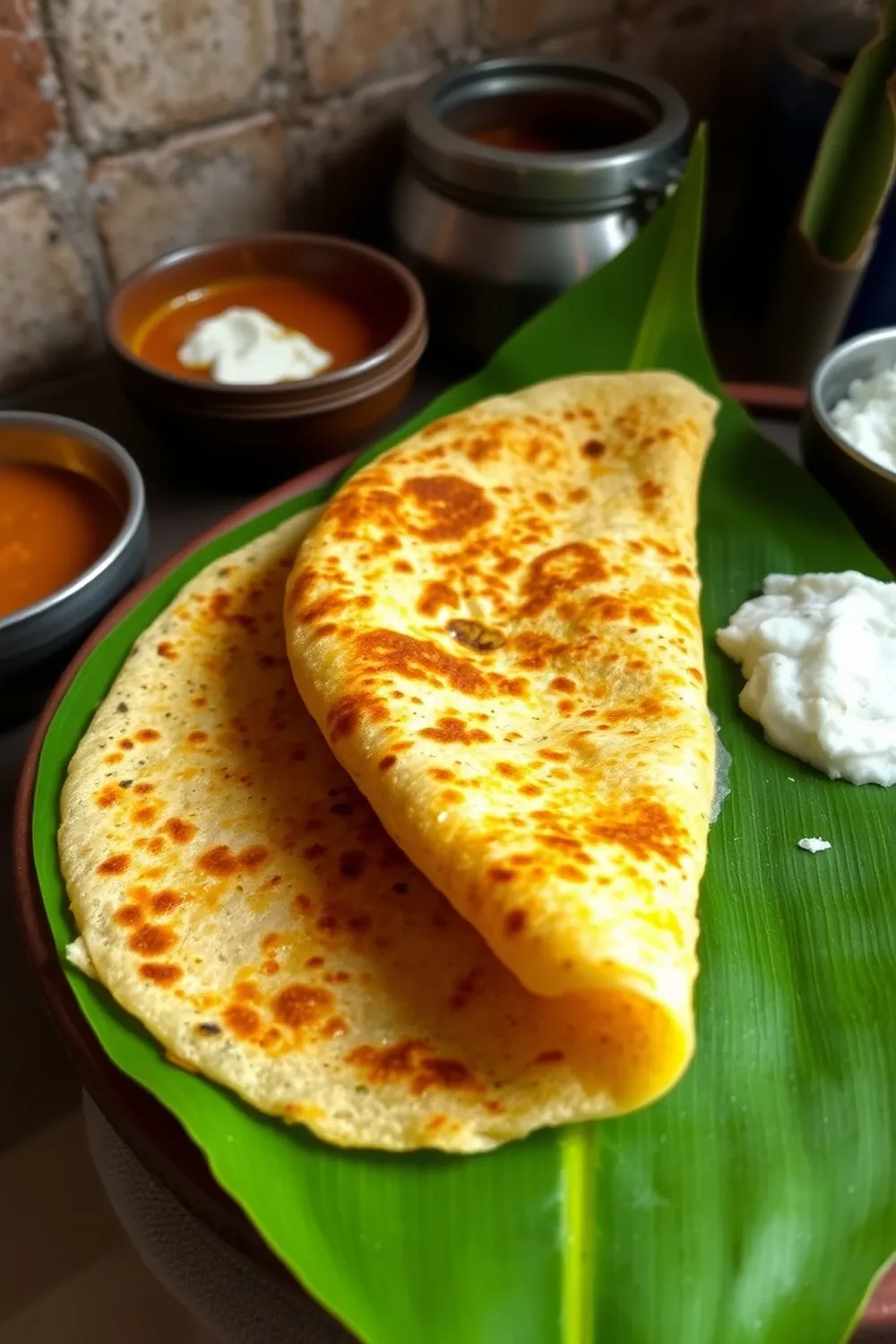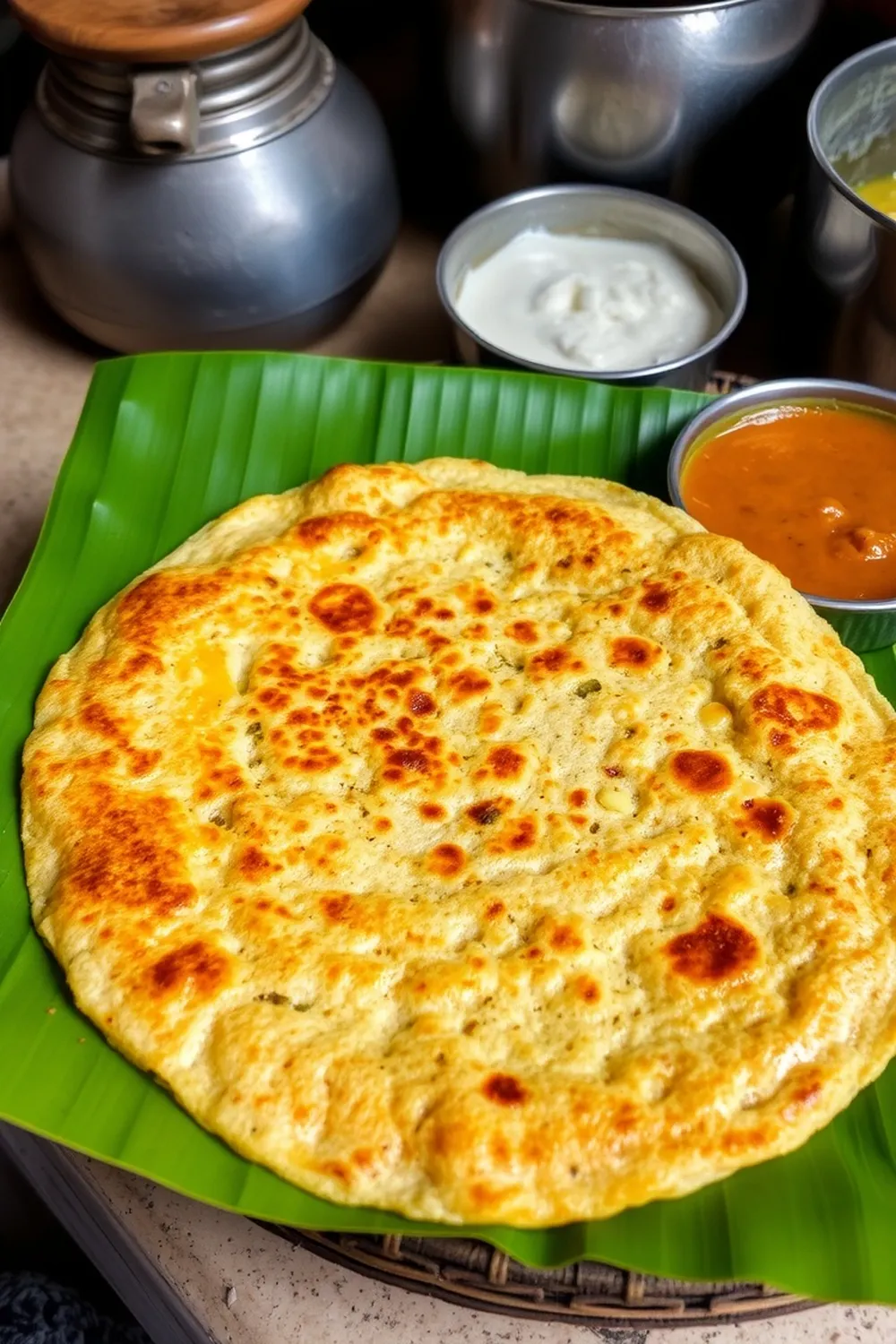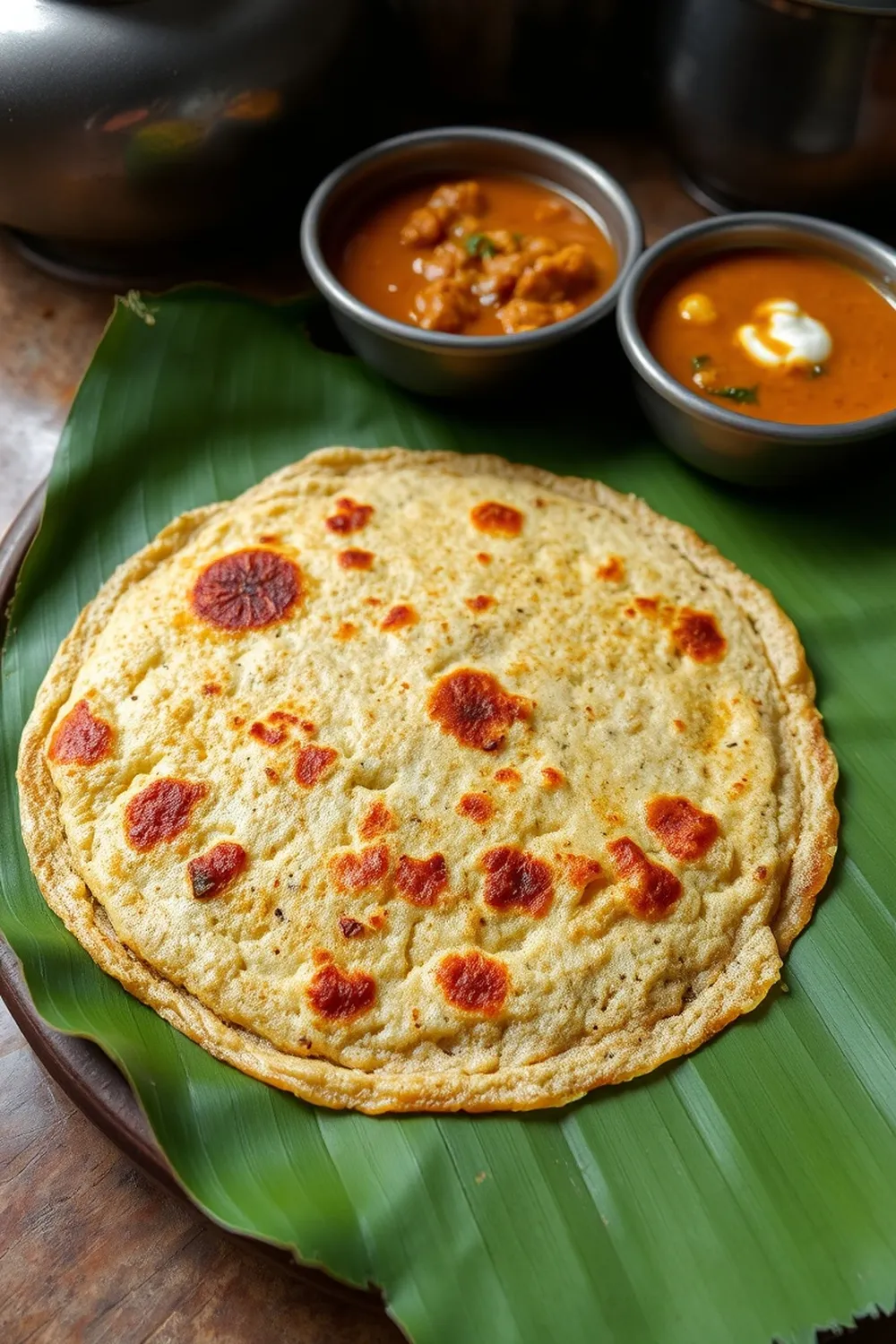- Rinse horsegram lentils thoroughly. Pressure cook with 3-4 cups of water for 15-20 minutes, or until soft. Let cool completely.
- Blend the cooked lentils (along with some of the cooking water), onion, cumin seeds, red chillies, and curry leaves into a smooth paste. Add more water if needed to achieve a smooth consistency.
- Gently combine the horsegram paste with dosa batter. Add water, a tablespoon at a time, to adjust the consistency to a thin, pouring batter.
- Heat a tawa or flat griddle over medium heat. Pour a ladleful of batter onto the tawa and spread it into a thin circle. Drizzle with oil around the edges.
- Cook until the dosa turns golden brown and crispy. Flip and cook the other side briefly. Serve hot with chutney and sambar.
- Calories:90 kcal25%
- Energy:376 kJ22%
- Protein:4 g28%
- Carbohydrates:15 mg40%
- Sugar:1 mg8%
- Salt:50 g25%
- Fat:2 g20%
Last Updated on 6 months ago by Neha Deshmukh
Horsegram Dosa Recipe – Authentic South Indian Lentil Crepes
Hey everyone! If you’re anything like me, you’re always on the lookout for ways to sneak a little extra nutrition into your meals. And let me tell you, these Horsegram Dosas are amazing for that! I first stumbled upon this recipe while exploring some traditional South Indian dishes, and it’s quickly become a family favorite. It’s a fantastic twist on the classic dosa, packed with protein and flavor. Let’s get cooking!
Why You’ll Love This Recipe
These aren’t your average dosas. Horsegram, a lesser-known lentil, adds a wonderful earthy flavor and a serious nutritional boost. They’re surprisingly easy to make, and the result is a crispy, delicious crepe that’s perfect for breakfast, lunch, or even a light dinner. Plus, they’re a great way to introduce a unique ingredient into your cooking repertoire!
Ingredients
Here’s what you’ll need to whip up a batch of these beauties:
- 1/3 cup horsegram lentil (approx. 75g)
- 3 cups regular dosa batter (approx. 720ml)
- 1 onion
- 1 teaspoon cumin seeds
- 2 sprigs curry leaves
- 2 dried red chillies
- Sesame oil, as needed
Ingredient Notes
Let’s talk ingredients! Getting these right will make all the difference.
Horsegram Lentils – Nutritional Benefits & Regional Use
Horsegram (kulthi dal) is a real powerhouse! It’s packed with protein, iron, and fiber. Traditionally used in Ayurvedic medicine, it’s especially popular in the southern states of India, particularly Tamil Nadu and Karnataka. You can usually find it at Indian grocery stores, or online. Don’t be intimidated if you’ve never used it before – it’s worth it!
Dosa Batter – Type & Preparation
I recommend using a good quality, fermented dosa batter. You can make your own (which is super rewarding!), or you can buy it pre-made. If buying, ensure it’s fresh and has a slightly sour aroma – that’s a sign of good fermentation. The batter should be a pourable consistency.
Sesame Oil – Flavor Profile & Alternatives
Sesame oil (gingelly oil) is the traditional oil for making dosas. It imparts a lovely nutty flavor that complements the horsegram beautifully. If you can’t find sesame oil, you can substitute with vegetable oil or coconut oil, but the flavor won’t be quite the same.
Step-By-Step Instructions
Alright, let’s get down to business!
- First, give the horsegram lentils a good clean and rinse. Then, pop them into a pressure cooker with about 2 cups of water. Cook for 15 minutes, or until they’re nice and soft. Let it cool completely – patience is key here!
- Once cooled, it’s blending time! Add the cooked horsegram (along with the water it cooked in – don’t discard it!), the onion, cumin seeds, red chillies, and curry leaves to a blender. Blend until you have a super smooth paste. Add a little extra water if needed to get the right consistency.
- Now, gently combine the horsegram paste with your dosa batter. Don’t overmix! Add a little water, a tablespoon at a time, to thin the mixture to a consistency similar to pancake batter. It should easily spread on the tawa.
- Heat a flat tawa (griddle) over medium heat. Lightly drizzle with sesame oil. Once hot, pour a ladleful of batter onto the tawa and quickly spread it into a thin circle.
- Drizzle a little more sesame oil around the edges. Cook for a couple of minutes, until the bottom is golden brown and crispy.
- Flip the dosa carefully and cook the other side for just a minute or so. You want it to be lightly golden.
- Serve immediately with your favorite chutney!
Expert Tips
- Don’t skip the fermentation of the dosa batter – it’s what gives dosas their signature tang and light texture.
- A well-seasoned tawa is your best friend for making dosas. It prevents sticking and ensures even cooking.
- The key to a crispy dosa is a hot tawa and a thin batter.
Variations
Want to switch things up? Here are a few ideas:
Vegan Adaptation
This recipe is naturally vegan! Just ensure your dosa batter is also vegan (some contain yogurt).
Gluten-Free Notes – Confirming Batter Composition
This recipe is generally gluten-free, but always double-check the ingredients of your dosa batter. Some commercially available batters may contain wheat flour.
Spice Level Adjustment – Red Chilli Quantity
If you’re sensitive to spice, start with just one red chilli, or remove the seeds before blending. My family loves a little kick, so I usually stick with two!
Regional Variations – Different Chutney Pairings
In my family, we love pairing these with coconut chutney or a spicy tomato chutney. But feel free to experiment! A mint-coriander chutney or even a simple sambar would be delicious.
Serving Suggestions
Horsegram dosas are fantastic on their own, but they really shine when served with accompaniments. Think:
- Coconut chutney
- Tomato chutney
- Sambar
- A side of fresh vegetables
Storage Instructions
Leftover dosa batter can be stored in the refrigerator for up to 3 days. Just give it a good stir before using. Cooked dosas are best enjoyed fresh, but you can reheat them briefly on a tawa or in a microwave.
FAQs
Let’s answer some common questions!
What is Horsegram and where can I find it?
Horsegram (kulthi dal) is a nutritious lentil popular in South India. You can find it at Indian grocery stores or online retailers.
Can I use store-bought dosa batter?
Absolutely! Store-bought dosa batter is a convenient option. Just make sure it’s fresh and fermented.
How do I adjust the consistency of the dosa batter?
If the batter is too thick, add a little water, one tablespoon at a time, until it reaches a pourable consistency. If it’s too thin, you can add a tablespoon of rice flour.
What is the best oil to use for making dosas?
Sesame oil is traditional and adds a lovely flavor. But vegetable oil or coconut oil work well too.
Can I make this dosa ahead of time?
You can prepare the horsegram paste ahead of time and store it in the refrigerator for a day or two. But it’s best to mix it with the dosa batter just before cooking.
What chutneys pair best with Horsegram Dosa?
Coconut chutney, tomato chutney, and mint-coriander chutney are all fantastic choices!







